Have you ever been captivated by the beauty of a bonsai tree? These small yet powerful living artworks are truly enchanting. And let’s not forget about their pots – they are more than just containers. They are an integral part of the bonsai. So, when asking ‘How do I choose a bonsai pot?’ it’s important to consider it’s a delicate balance between practicality and aesthetics.
And it’s a topic we’re excited to explore in this comprehensive guide. We’ve outlined key topics to give you an informed perspective when selecting the perfect pot for your bonsai:
- The indispensable role of the right bonsai pot, and how it contributes to your tree’s overall health and growth.
- Understanding your particular bonsai’s specific needs, as this is key to determining the ideal pot size, material, and shape.
- Decoding the different bonsai pot materials, and how each one impacts your bonsai’s growth and maintenance.
- The aesthetic aspect of choosing a bonsai pot, exploring various styles, colors, and how they harmonize with your bonsai tree and your space.
- Offering practical tips and tricks for choosing your bonsai pot, including where to buy, factors to consider, and common pitfalls to avoid.
The Importance of the Right Bonsai Pot
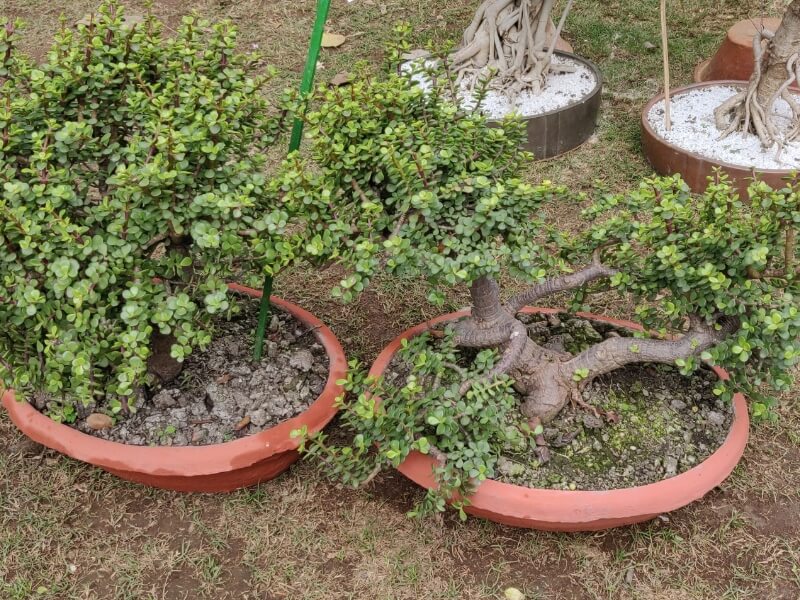
When pondering ‘how do I choose a bonsai pot?’, it’s essential to understand the importance of choosing the right bonsai container. Choosing the right pot for your bonsai holds a significance similar to finding a comfortable home for ourselves. It’s a place where the tree will grow and thrive, and its health and development are intricately tied to the pot it resides.
Aiding Bonsai Health
First and foremost, a suitable pot ensures the health of your bonsai. It offers adequate space for the roots to spread, enabling optimal absorption of water and nutrients. An undersized pot may restrict growth, while an oversized one may retain excess water, potentially leading to root rot.
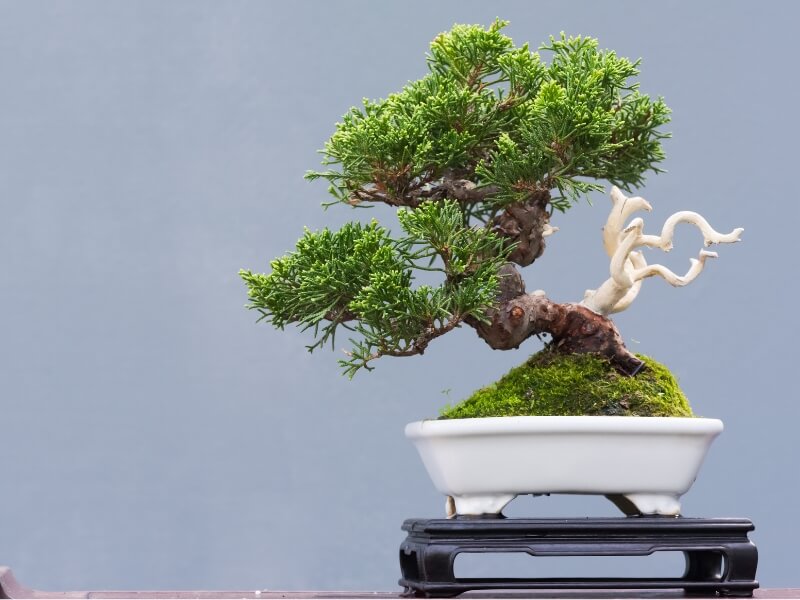
Ensuring Proper Growth
Another decisive factor is the potential for proper growth. The right bonsai pots foster the right conditions for your tree to flourish. The roots need space to grow, and they also need the pot to provide stability. A well-chosen pot serves as a foundation, supporting your bonsai as it grows and matures.

Creating Harmony
In the art of bonsai, the pot is more than just a container—it’s an integral part of the overall aesthetic. The pot and the tree must create a harmonious picture, working together to express the essence of this unique art form. The right pot enhances the beauty of your bonsai, creating a balanced and tranquil display.
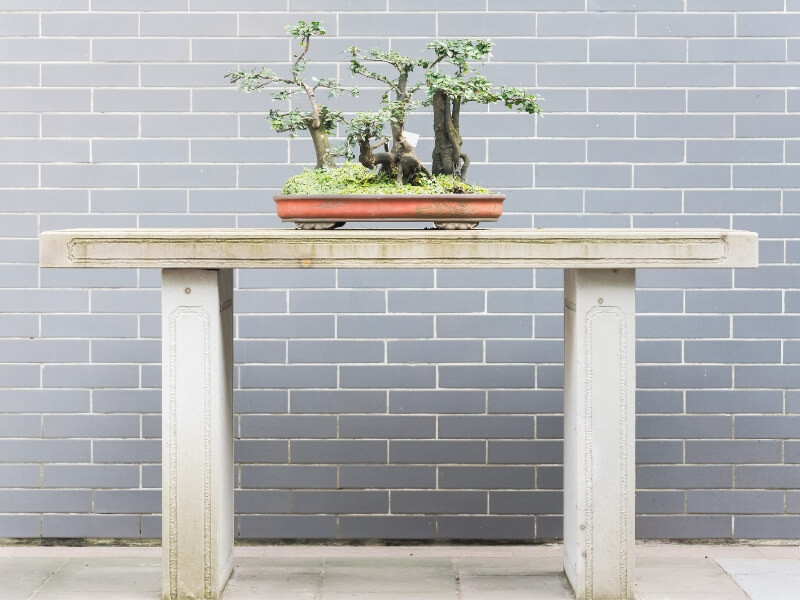
Understanding Your Bonsai’s Needs
Just as we all have our unique needs and desires, each type of bonsai tree has its own set of requirements.
The Need for Space
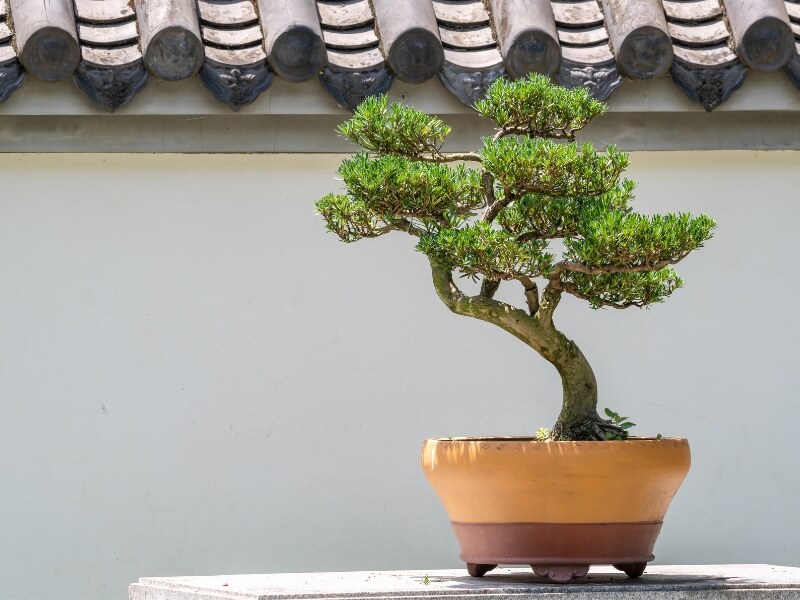
For instance, some bonsai trees, like the robust Juniper bonsai, crave ample space. These sizable pots allow the extensive root system to stretch out, promoting healthy growth and fostering a sturdy, hardy tree.
Roots and Material
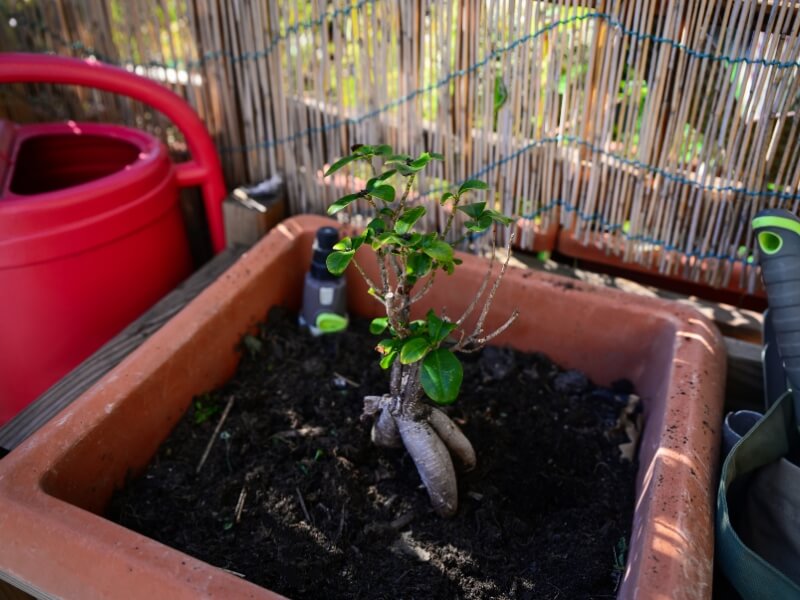
On the other hand, tropical bonsai species like the Ficus bonsai prefer moisture-retentive materials for their pots. Their love for humidity and warm climes are best catered to in a ceramic or clay pot that retains water, mimicking their natural habitat.
Shape and Depth Matters
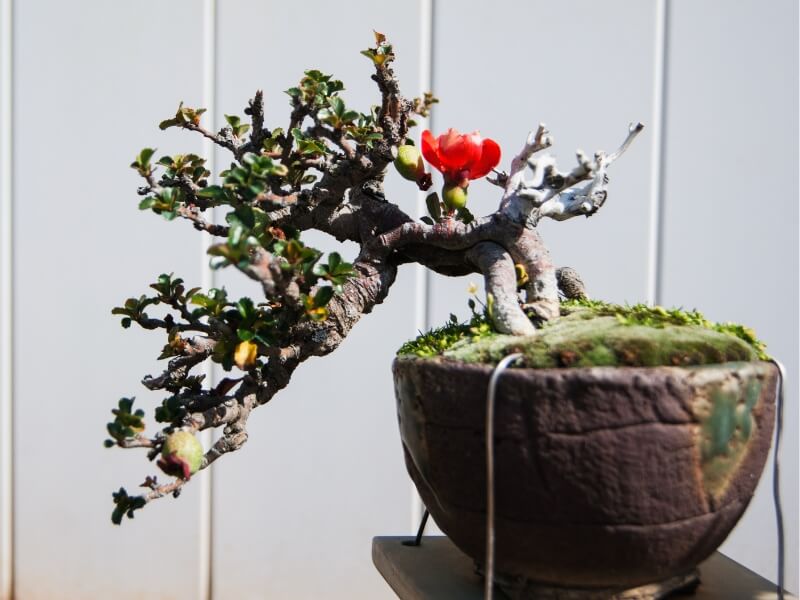
The shape and depth of the pot also play a crucial role, which is often overlooked. For example, cascading bonsai styles, where branches elegantly fall over the side, are best suited to deep and often round pots. This provides the perfect stage for their graceful display.
The Influence of Seasons
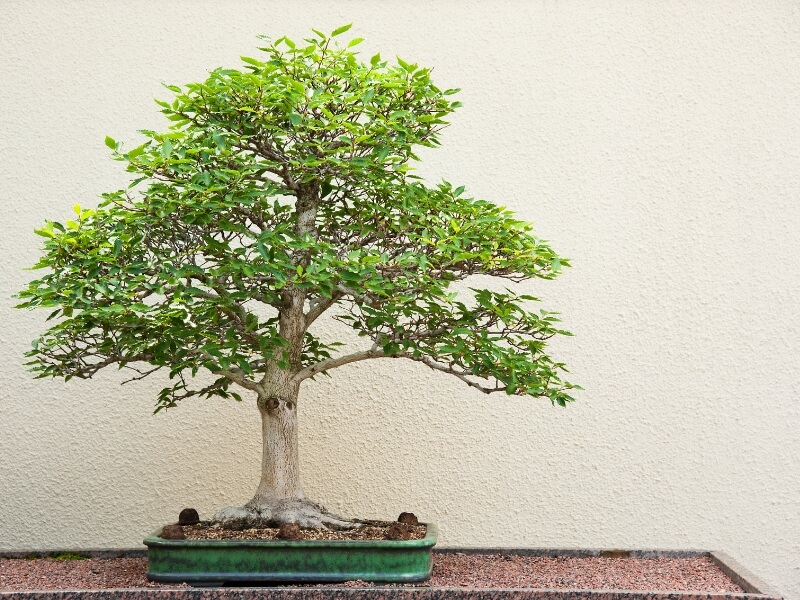
Seasons also influence pot selection. Deciduous bonsai trees, which lose their leaves in the winter, are often paired with glazed pots. The shiny finish adds a touch of color during the bleak winter months, keeping your bonsai display lively and vibrant.
Different Types of Bonsai Pots
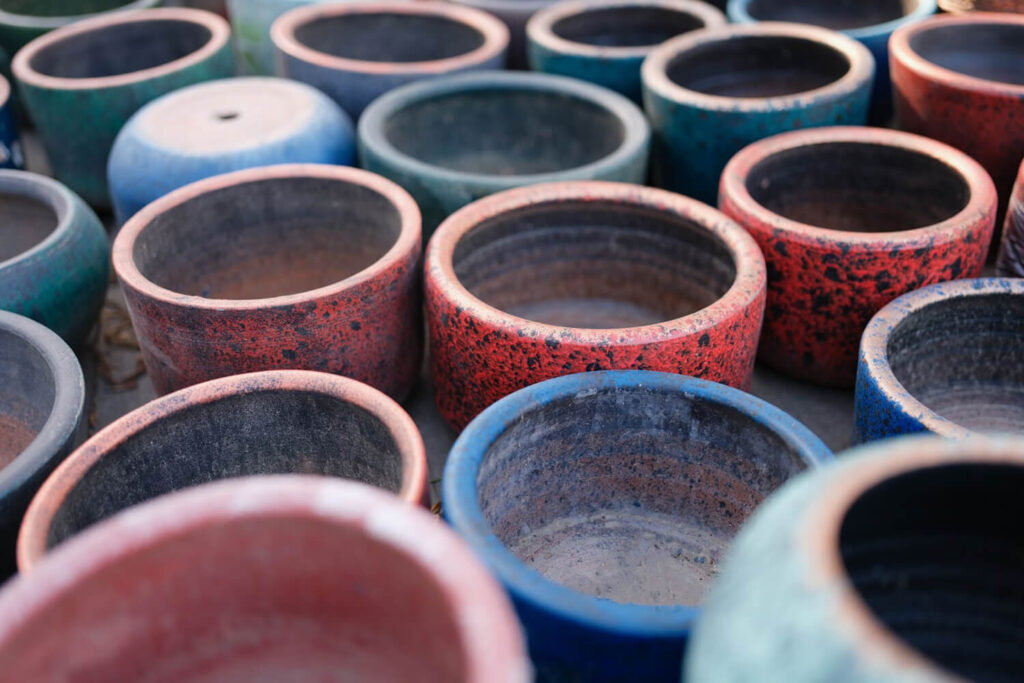
Bonsai tree pots differ from regular plant pots sold in the general market.
For once, bonsai tree pots are shallower and require a few additional design elements, such as drainage holes and wiring holes, as these are necessary for the proper maintenance of the tree.
Since bonsai growing is an ancient-long horticultural practice, it just makes sense that many antique bonsai tree pots are circulating in the community.
One of the most preferred types of bonsai tree pots by many artists is the rare and expensive antique Chinese pots. These are specially crafted for bonsai trees, so you can expect great support from them.
However, antique Chinese pots are expensive and quite difficult to find.
Decoding Bonsai Pot Materials
Choosing the right material for your bonsai pot is like selecting the perfect fabric for an elaborate gown or the right type of wood for a tailor-made piece of furniture. Each material has its unique strengths and considerations.
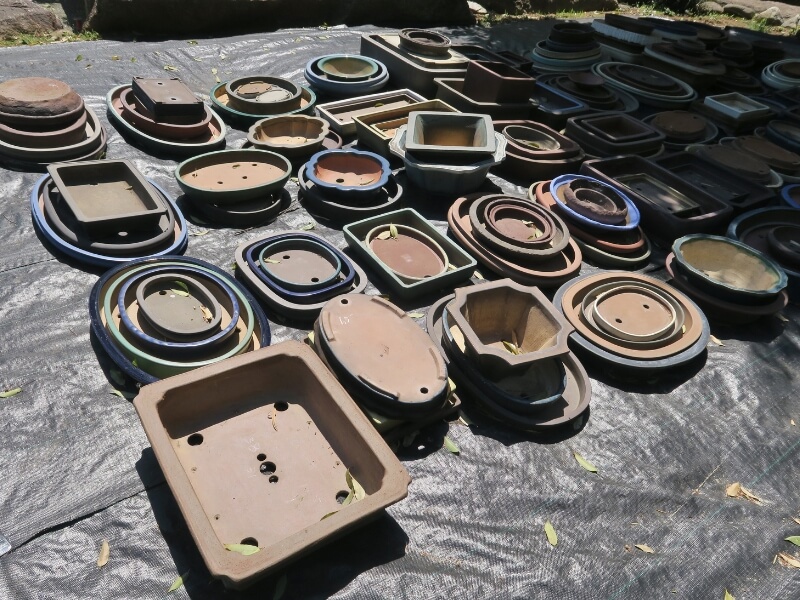
Let’s explore some of the common materials, their benefits, and their impact on your bonsai’s well-being and maintenance.
- Ceramic. Ceramic pots, beloved for their classic appeal, provide excellent moisture retention. They offer a vast range of designs and a beautiful glazed finish, ideal for adding a splash of color, especially in winter. However, they can be more fragile and may require delicate handling.
- Clay (Unglazed Pot). Clay pots are a traditional favorite. They provide excellent breathability, helping the roots to stay healthy. Their earthy tones bring out the natural beauty of your bonsai, creating a harmonious picture. One thing to bear in mind is that they may encourage moss growth on the surface over time.
- Plastic. If you’re on a budget or just starting with bonsai, plastic pots could be a practical option. They are lightweight, durable, and affordable. However, they may not offer the same aesthetic appeal as ceramic or clay pots and may not provide optimal insulation for the roots.
- Mica. Mica pots, made from a blend of 80% mica, 15% polyethylene, and 5% graphite, combine the best of both worlds. They are durable like plastic yet offer the natural look of clay. They are also a great insulator, helping to protect the roots from extreme temperature fluctuations.
- Concrete. For large bonsai trees, concrete pots can be a suitable choice. They are sturdy and heavy, providing excellent stability. However, they are not as widely available in various designs and sizes and can be quite heavy to move around.
Bonsai Pot Styles and Aesthetics
Now, as you ponder ‘how do I choose a bonsai pot?’, let’s discuss the various components that influence the intricate interplay between the tree and the pot.

The Harmony of Colors
- Neutral Shades: Pots in earthy tones such as brown, beige, or grey emphasize the vibrant colors of your bonsai tree. They blend seamlessly with their surroundings, letting your bonsai be the star of the show.
- Bold Hues: For those who love a splash of color, pots in brighter shades can make a bold statement. A crimson pot under a maple bonsai in autumn can create a striking image. Just be careful not to overpower the tree, or it may get lost in the mix.
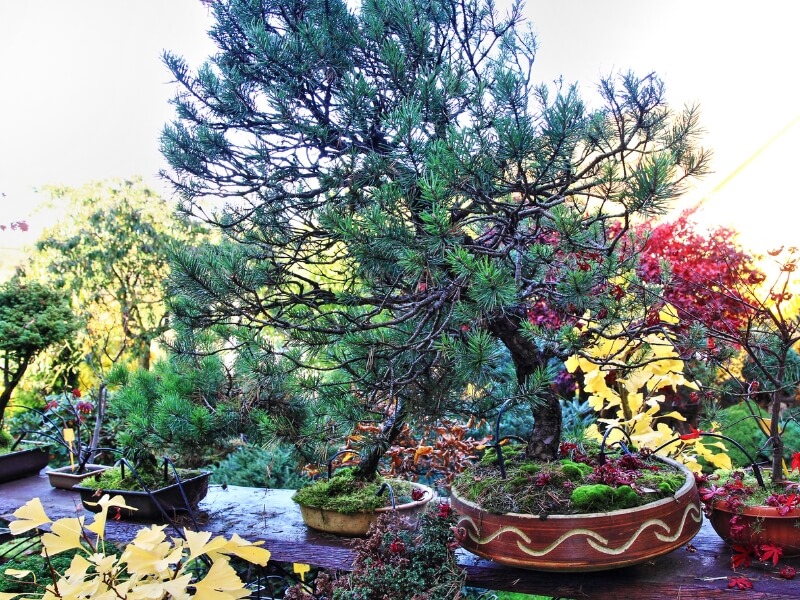
Intricate Textures
- Smooth Finishes: A pot with a smooth, glossy finish can add a touch of elegance to your bonsai display. They reflect light, adding a vibrant sheen, especially under the sun.
- Rustic Textures: For a more traditional look, consider pots with an unglazed or rough exterior. These pots give an old-world charm to your bonsai, invoking the feel of nature.
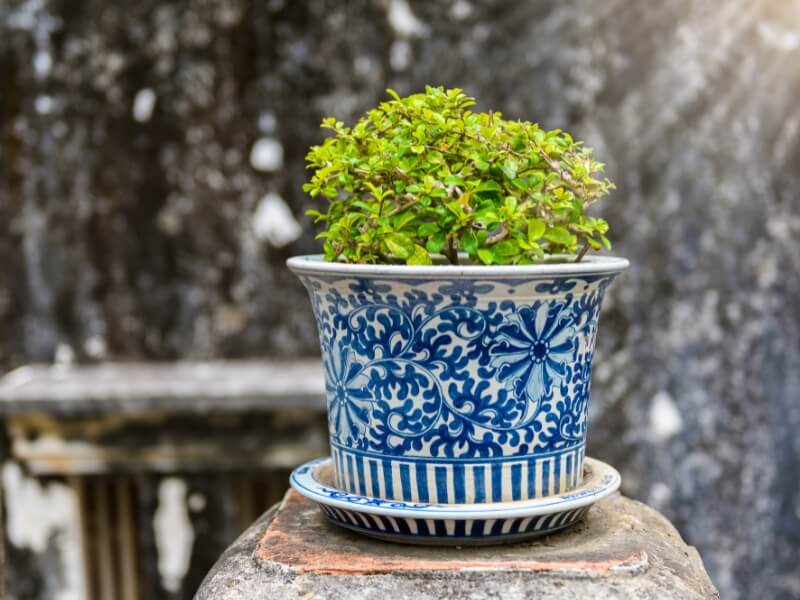
Styles and Shapes
- Classic Shapes: Rectangular and oval pots are a classic favorite, offering a traditional look. Rectangular pots suit upright bonsai styles, while oval pots are a good match for bonsai with a more relaxed form.
- Unique Forms: For those who wish to venture off the beaten path, there are myriad unique pot shapes to explore. From cascading pots for your draping bonsai to deep, drum-shaped pots for your masterpiece bonsai, there’s a pot for every tree.
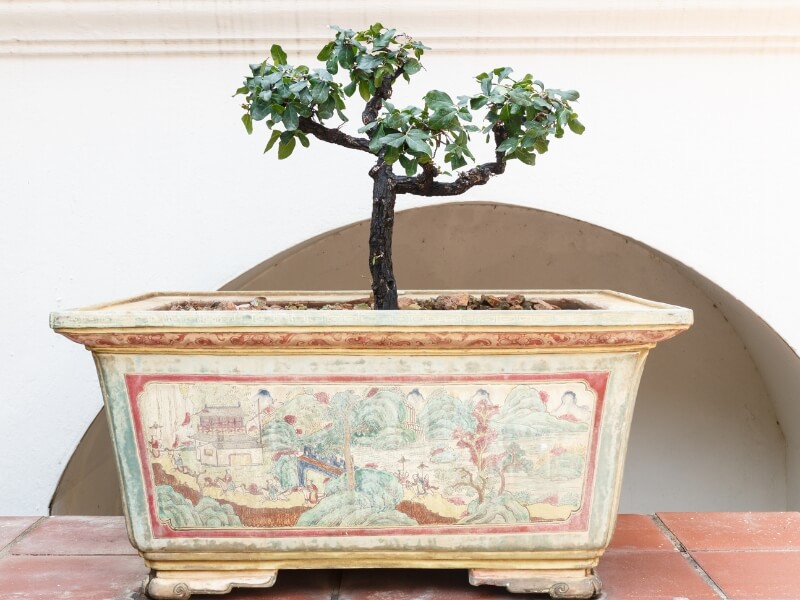
Bonsai Pot Maintenance
Maintaining your bonsai pot is just as important as taking care of the tree itself. Here are a few tips to keep your bonsai pot in optimal condition:
Cleaning
Keeping your bonsai pot clean is essential to prevent the buildup of salts and minerals from the water and fertilizer. Over time, these substances can accumulate and damage the roots of your bonsai tree. To clean your bonsai pot, start by removing any loose dirt or debris with a soft brush. Then, use a mild solution of water and vinegar to scrub the pot gently, being careful not to damage the surface. Rinse thoroughly with water and let it dry completely before placing your tree back in the pot.
Checking for Damage
Bonsai pots, like any other type of pottery, can crack or break over time. Changes in temperature, especially during winter, can cause pots to expand and contract, leading to cracks or fractures. If your bonsai pot is damaged, it can harm the health of your bonsai tree. Make sure to inspect your pot regularly for signs of damage. If you notice any cracks or chips, it may be time to replace the pot.
Repotting
Depending on the growth speed of your bonsai tree and the size of your pot, you may need to repot your tree every 2 to 5 years. Repotting your bonsai provides it with fresh soil and more room for growth. It also gives you a chance to change the pot, adding some variety to your bonsai display. When repotting your tree, make sure to choose a pot that is slightly larger than the old one and fill it with fresh bonsai soil. Carefully remove your tree from its old pot and gently untangle the roots before placing it in the new pot.
Storage
If you have an assortment of bonsai pots, proper storage is essential to prevent breakage and preserve their quality. Keep your pots stacked neatly in a cool, dry place, away from direct sunlight. You can also wrap them in bubble wrap or newspaper to provide extra protection. Avoid storing your pots in damp or humid areas, as this can cause them to develop mold or mildew.
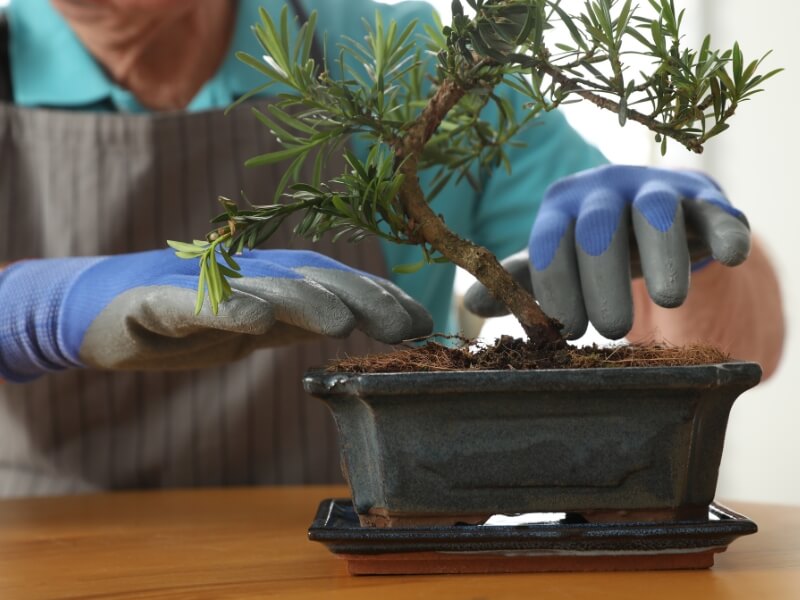
Choosing the Best Bonsai Pot for Your Bonsai Tree

Finding the perfect pot for your bonsai tree can be exciting or overwhelming, given the number of choices in the market.
To stream down your options, you should consider the following: pot size, pot shape, pot color, and pot texture.
1. Determine the appropriate bonsai pot size
When selecting a pot, the very first thing you should consider is your tree’s health. You should ensure that your tree has enough space in the pot to grow healthily.
One thing you have to keep in mind is that the pot size should always depend on the measurements of your tree.
And here are the three things you should measure:
- Height of the tree
- Width of the canopy or crown
- Diameter of the trunk near the nebari (surface roots)
Measuring the width of the pot
As a general rule, the width of the pot shouldn’t be more than 2/3 the height of the tree.
However, there are some exceptions to this rule.
You can break the 2/3 rule if:
- The crown is too wide.
- Your tree grows roots rapidly.
- You have fruit-bearing or flowering trees.
The solution is to find a wider pot that can accommodate your tree’s needs.
Measuring the depth of the pot
In terms of depth, it should be close to the trunk’s diameter, just above the nebari.
However, there are exceptions to this rule as well.
You can opt for a deeper pot if:
- Your tree grows roots fast.
- Your tree grows fruits or flowers.
- The trunk of your tree is too thick for its height.
For the third scenario, your best solution is to find a deeper but narrower bonsai pot.
Note: Repot your tree as necessary into smaller and smaller bonsai pots to help it adapt slowly.
Some Examples
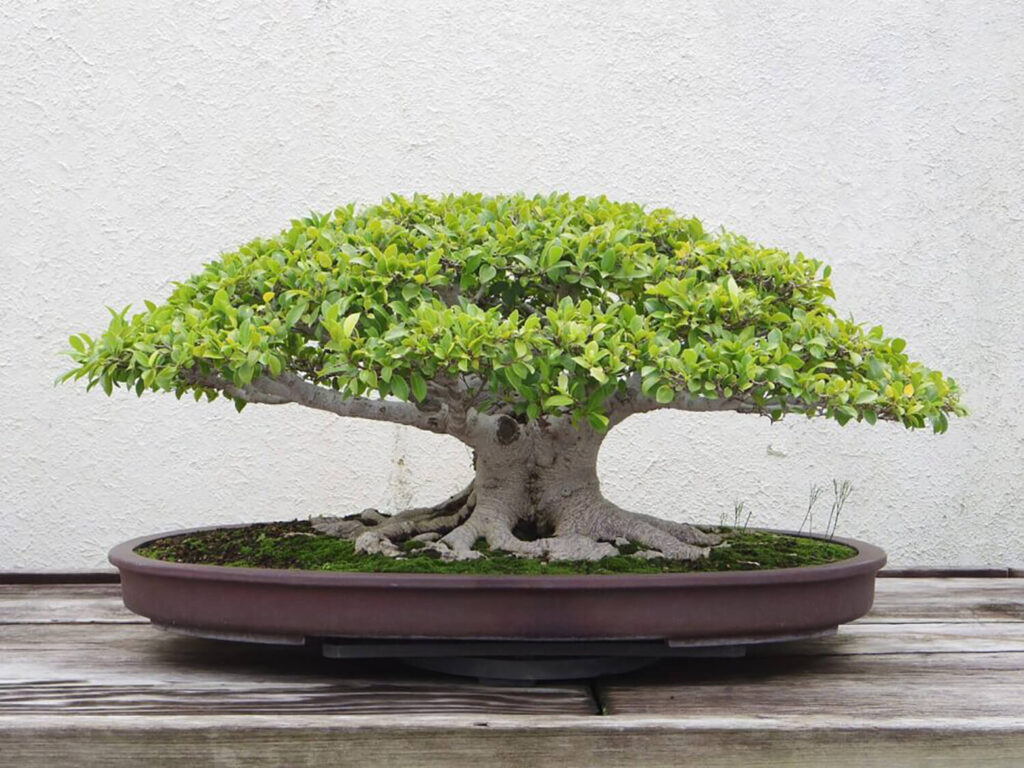
Here’s an example of a short tree with a wide crown.
The tree is potted in a round pot that’s as wide as the crown of the tree to create visual balance.
The artist chose a very shallow pot to highlight the tree roots running along the rock.
Doing this also makes sense, as ishizuki bonsai (root-over-rock bonsai) doesn’t use much soil on the pot.
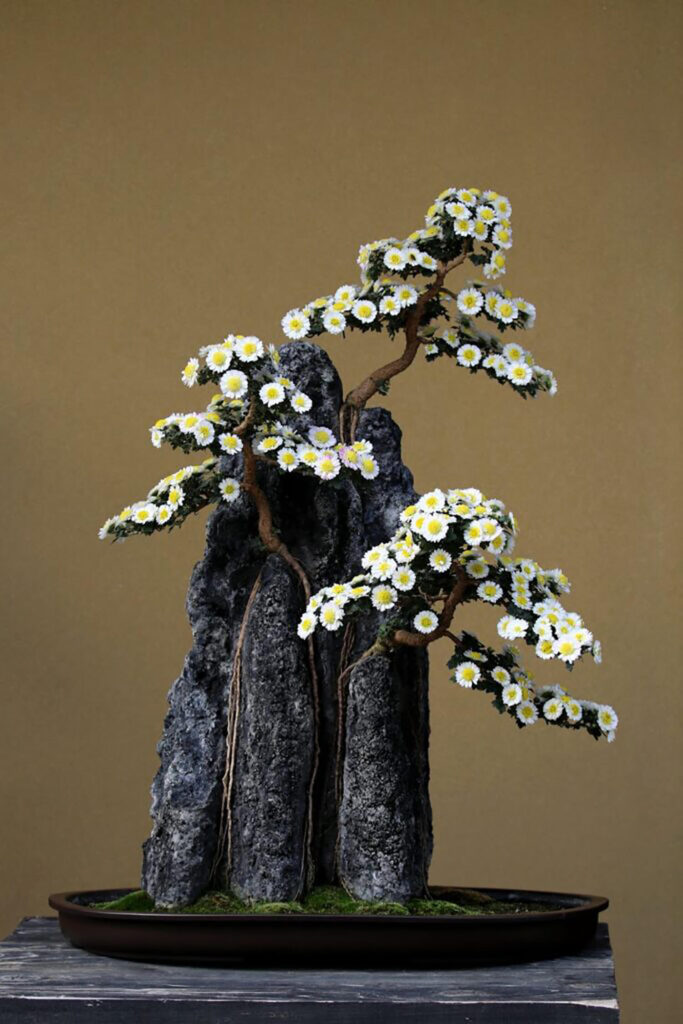
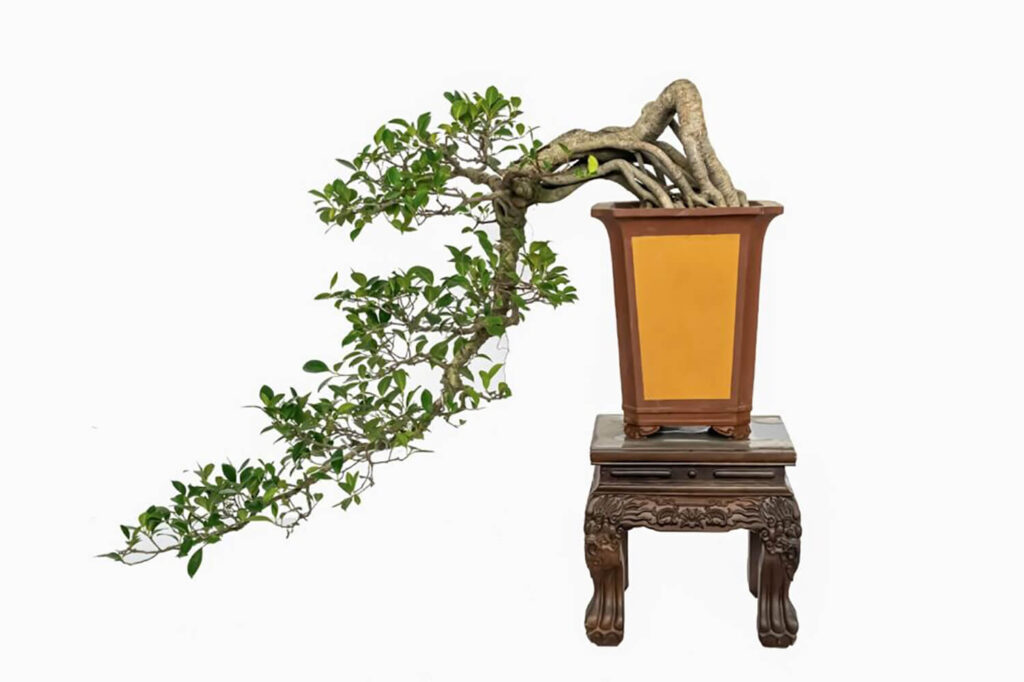
Deep, narrow pots are mostly used for cascade or semi-cascade bonsai.
This is to provide sufficient space for the branches to hang freely and avoid hitting the ground or bench when displayed.
2. Choose the proper bonsai pot shape
The next thing you should consider is the shape of the pot, as it highlights the best features of the tree.
When choosing one, identify first whether your tree is feminine or masculine.
Feminine vs. Masculine
Most, if not all, trees both have feminine and masculine features. However, one will always be dominant over the other—and that’s what you have to identify.
Refer to this table below to know whether your bonsai tree is feminine or masculine:
| Feminine | Masculine | |
| Bark | Smooth | Old, ragged |
| Trunk | Thinner | Thick, often straight |
| Branches | Sparse | Dense |
| Curves | Elegant, soft | Sharp |
| Overall appeal | Graceful | Tough |
For feminine trees, it’s best to use rounded shallow pots. You may use rectangular ones as long as it has soft lines, delicate feet, and concave edges.
For masculine trees, it’s best suited for angular, slightly deeper pots with sharp lines, stout feet, lips on the rim, and convex edges.
Suppose you can’t identify the dominant sex or want to play safe. You may use a round or drum bonsai pot, which works well for either sex.
Some Examples
An example of a masculine bonsai tree with rough bark and dense branches.
The artist potted it in a rectangular pot with sharp edges, rim, and feet to match its masculine features.
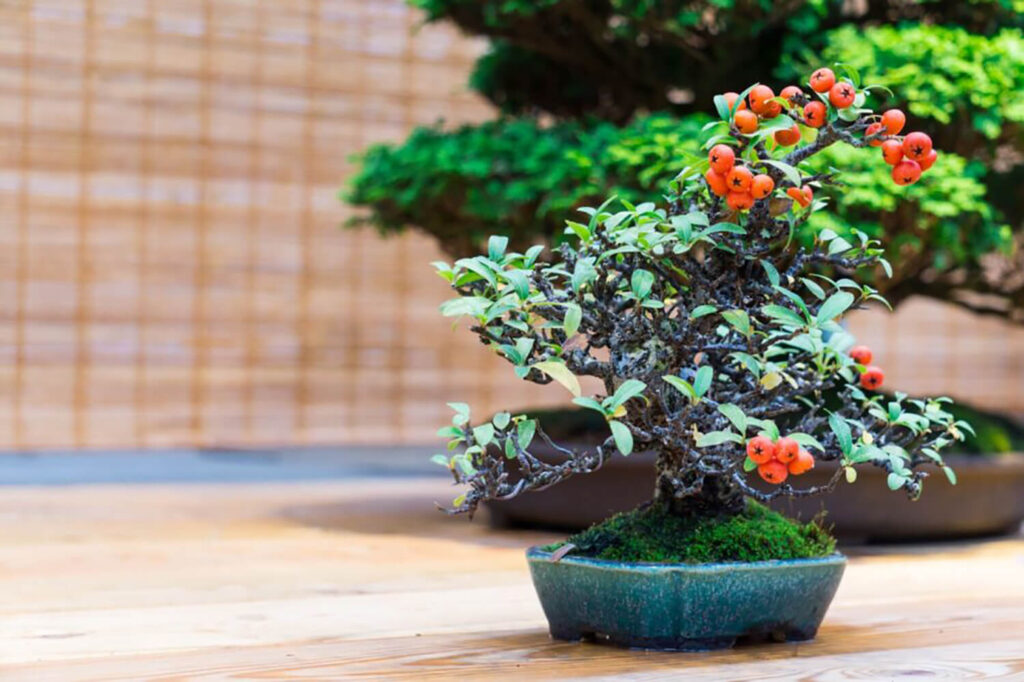
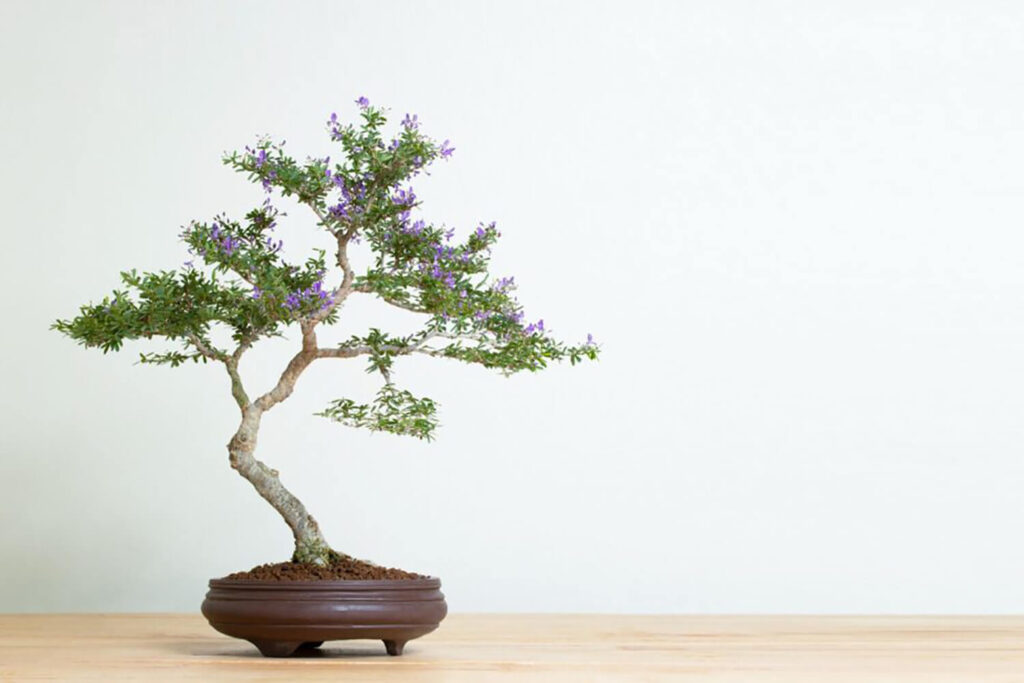
Here’s an example of a feminine tree with smooth bark, soft curves, and sparse branches.
It’s potted in a round pot with delicate, pointed feet and thin-line details, which bring out its gracefulness.
3. Pick the best-fitting bonsai pot color
After that, it’s time to pick the color of your pot.
Selecting the right pot color is crucial, as this can make or break the overall visual impact of your bonsai.
The goal of picking the best-fitting color is to create harmony on your tree. One way you can do that is by matching the color of the pot to any part of your tree.
You can pick either the color of the following:
- Bark
- Deadwood
- Tone of leaves
- Fruits or flowers
For deciduous trees that change leaf color in the fall, you may choose a neutral color that reflects the tree’s bark. That way, the pot color can blend well with the tree regardless of the season.
Some Examples
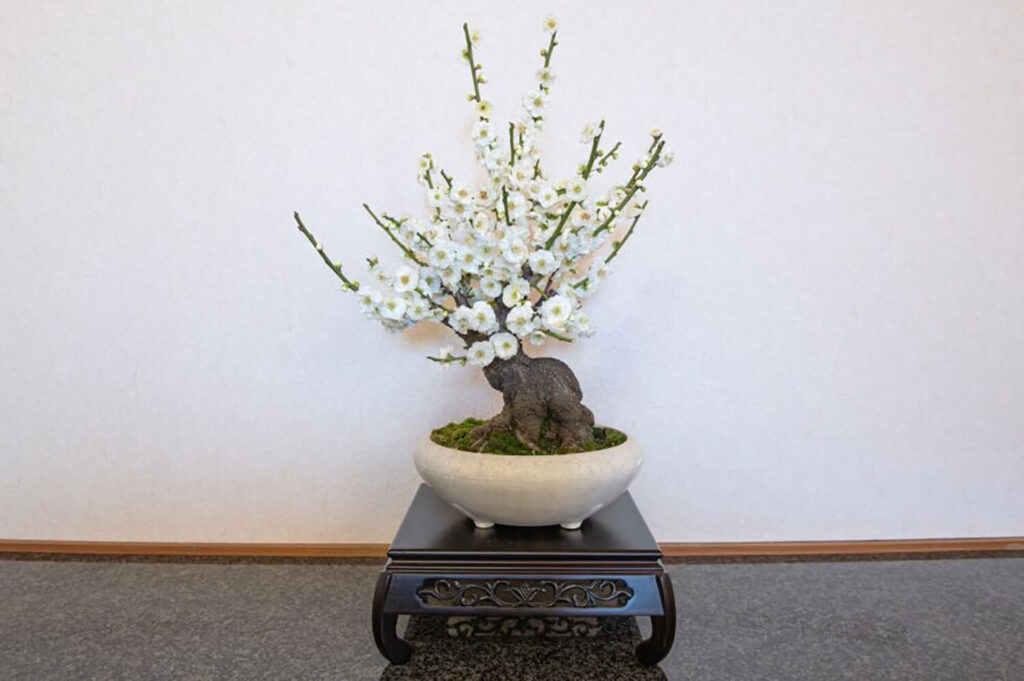
To complement the white flowers on this tree, the artist potted in an unglazed white pot with a brown undertone to match the bark.
Similarly, this bonsai tree with a grayish trunk is potted in a gray pot. The pot also has a green undertone to match the light green color of the leaves.
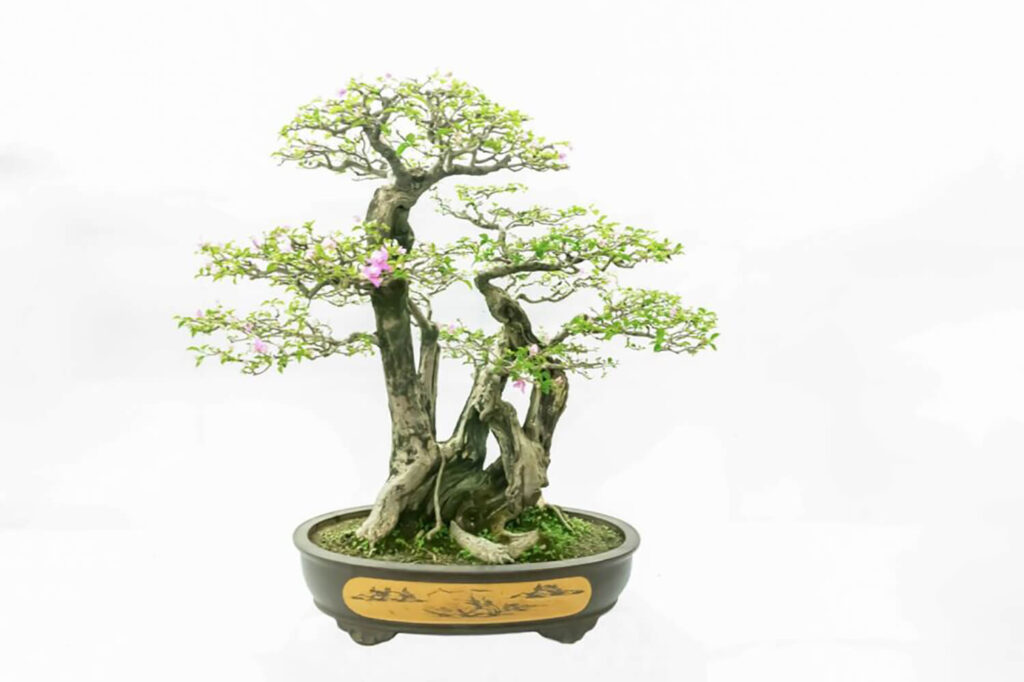
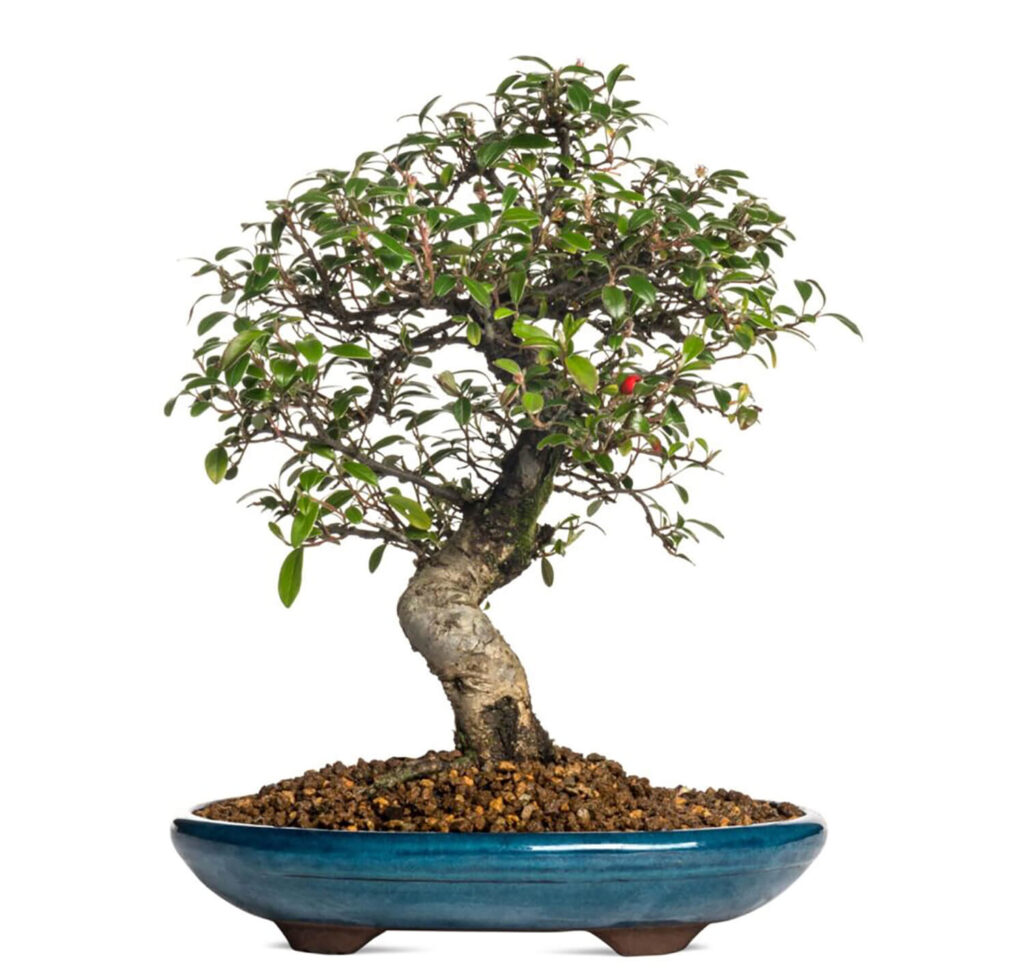
Although color matching is preferred, contrast can also work; look at this bonsai.
The artist potted the tree in a blue glazed pot to complement the little red fruits hanging on the branches.
4. Select the suitable bonsai pot texture
Lastly, select the pot texture that would complete the visual look of your bonsai tree.
For this one, you’d have to consider the type of tree you have: whether it’s a conifer or deciduous.
For conifer trees
Most bonsai artists use unglazed pots for conifer trees.
This is because coniferous trees are valued more for their “ancient” look. Using an unglazed pot can help them appear more old and ragged, as if they’re truly struggling to survive.
For deciduous trees
Glazed ones are popular for deciduous trees as they help reflect the tree’s beauty as seasons change. Especially during fall, when the tree is bare, the glazed pot can help add more interest to it.
Some Examples
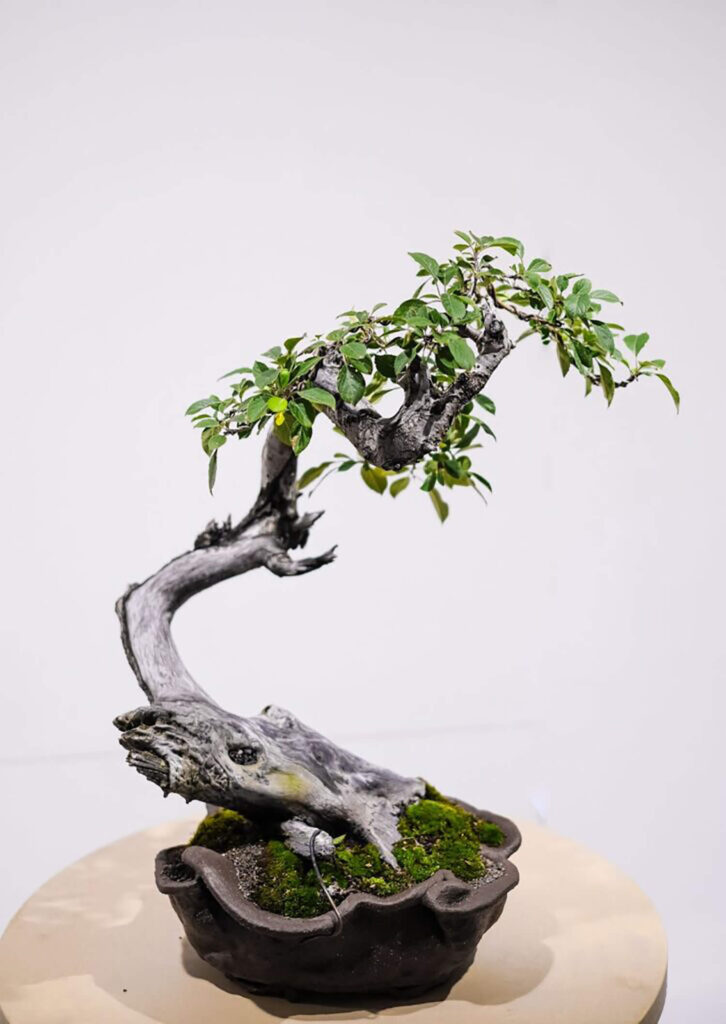
This unique irregular-shaped bonsai pot complements the tree by acting as an extension of the curvy trunk.
The curves on the rim and the pot’s color reflect the trunk’s traits, which is the main highlight of this particular bonsai.
The pot used in this bonsai is pretty basic: round and neutral.
What makes it perfect for this specific bonsai is the dragon design that reflects the curves and color of the trunk and branches.
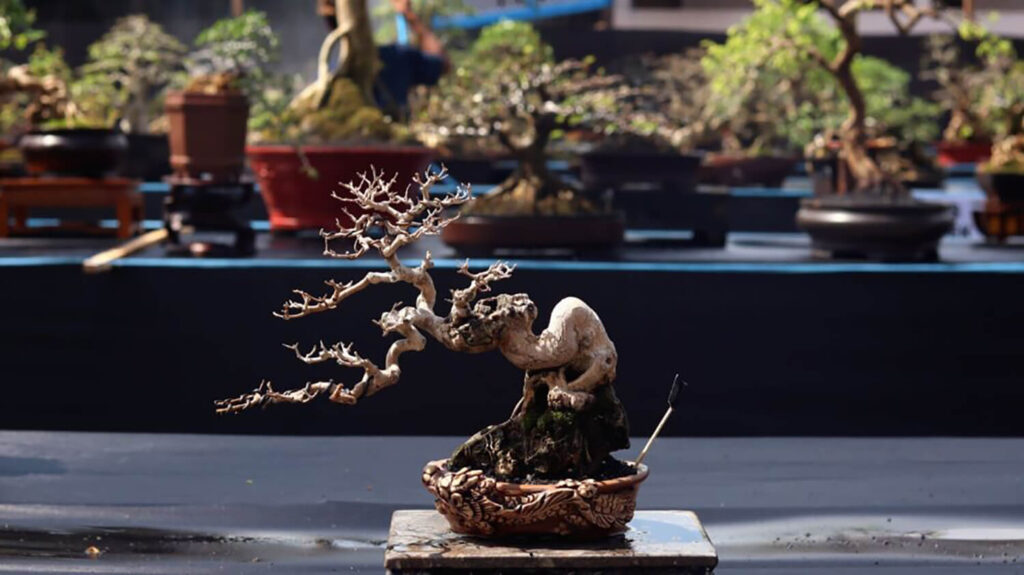
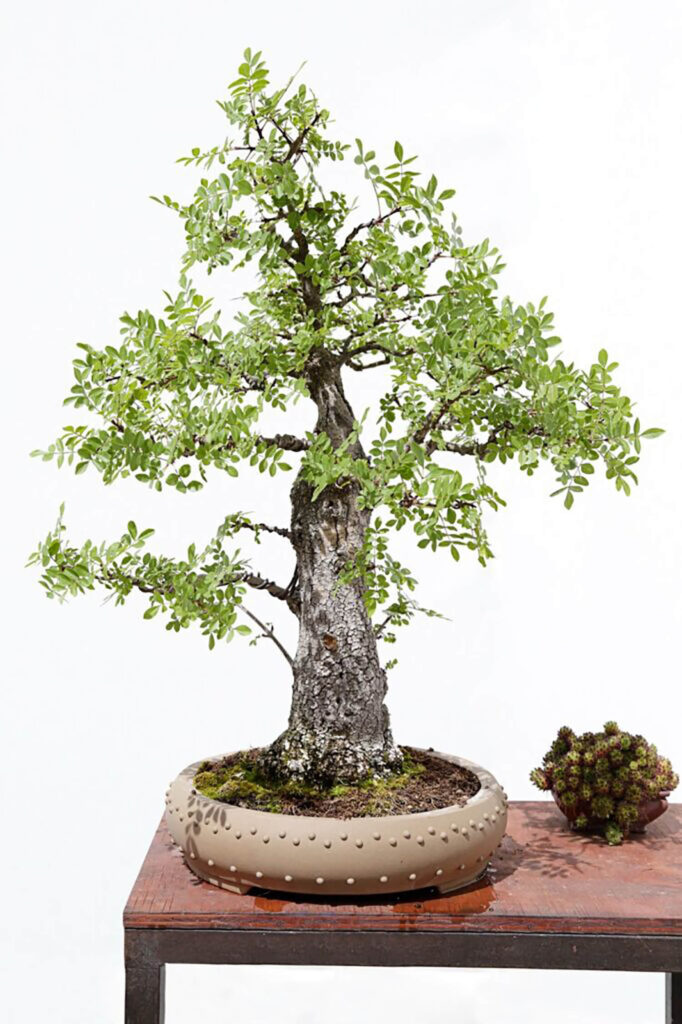
The spiky details on the pot reflect the clearly-visible pointy apex of the tree.
Likewise, the choice of the pot color matches the tone color of the trunk.
Do you need more guidance on choosing the right pot for your bonsai? Then, check out this video:
Unleash the Beauty: Choosing the Perfect Bonsai Pot for Your Tree’s Journey

In the journey of nurturing a bonsai tree, every choice matters, especially the selection of the pot. Here’s a quick recap of the key takeaways to guide you in your decision:
- Materials: From the classic charm of ceramic to the practicality of plastic, each pot material has its unique strengths and considerations.
- Styles and Aesthetics: The harmony of colors, textures, and shapes play a significant role in creating a pleasing visual interplay between the tree and the pot.
- Practical Tips: Choosing a reputable supplier, considering size and proportions, ensuring good drainage, checking pot quality, and taking your time are essential steps in choosing the right pot.
‘How do I choose a bonsai pot?’ is an essential question to consider as your bonsai tree and its pot form an inseparable pair, each enhancing the beauty and vitality of the other. So, choose your bonsai pot with care, focusing on both aesthetics and functionality.
Learn more about this captivating art and discover the joy of creating your bonsai masterpiece. Navigate through our other articles to expand your bonsai knowledge further.





0 Comments